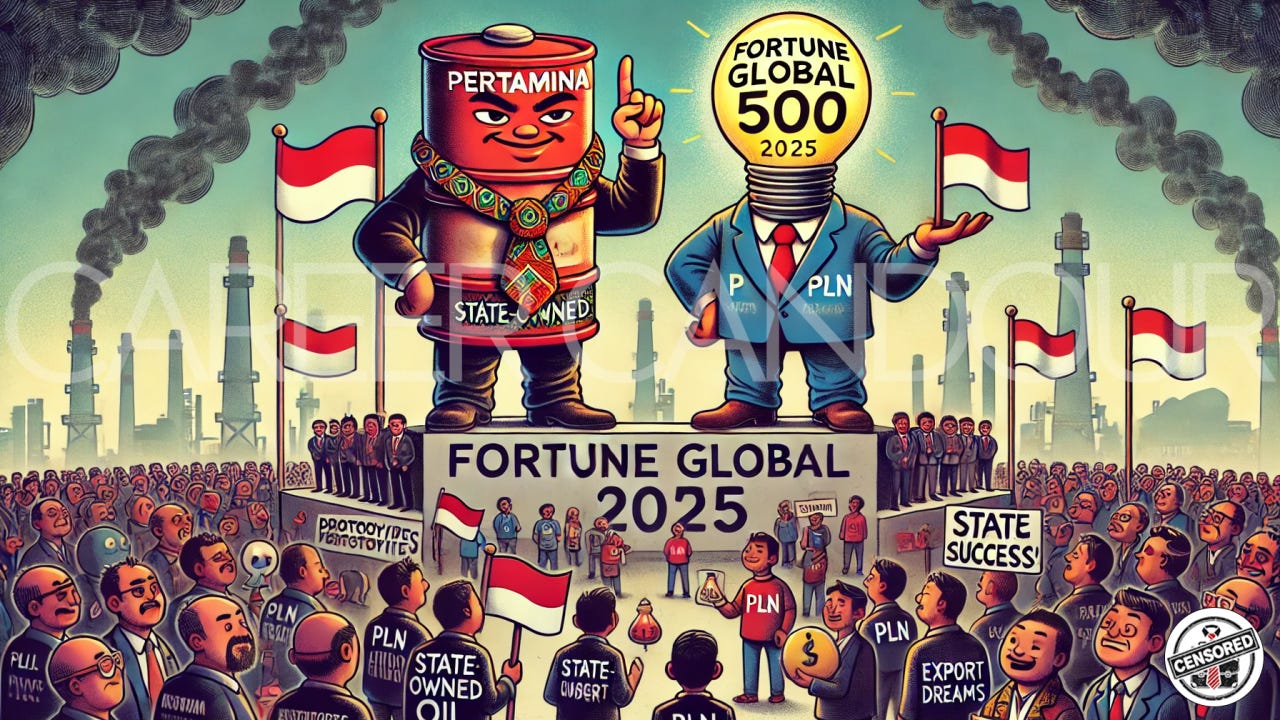Indonesia Returns to the Fortune Global 500, But Is That Really the Win We Think It Is?
PLN and Pertamina are on the Fortune Global 500. But what does their presence (and others’ absence) really tell us about Indonesia’s economy?
Indonesia has made headlines once again by placing two companies on the Fortune Global 500 list for 2025. At first glance, this seems like a moment of national pride. A milestone. Proof that Indonesia is taking its seat at the table of global business heavyweights.
But scratch the surface, and the story feels less like a breakthrough and more like a tech…
Keep reading with a 7-day free trial
Subscribe to Career Candour to keep reading this post and get 7 days of free access to the full post archives.



